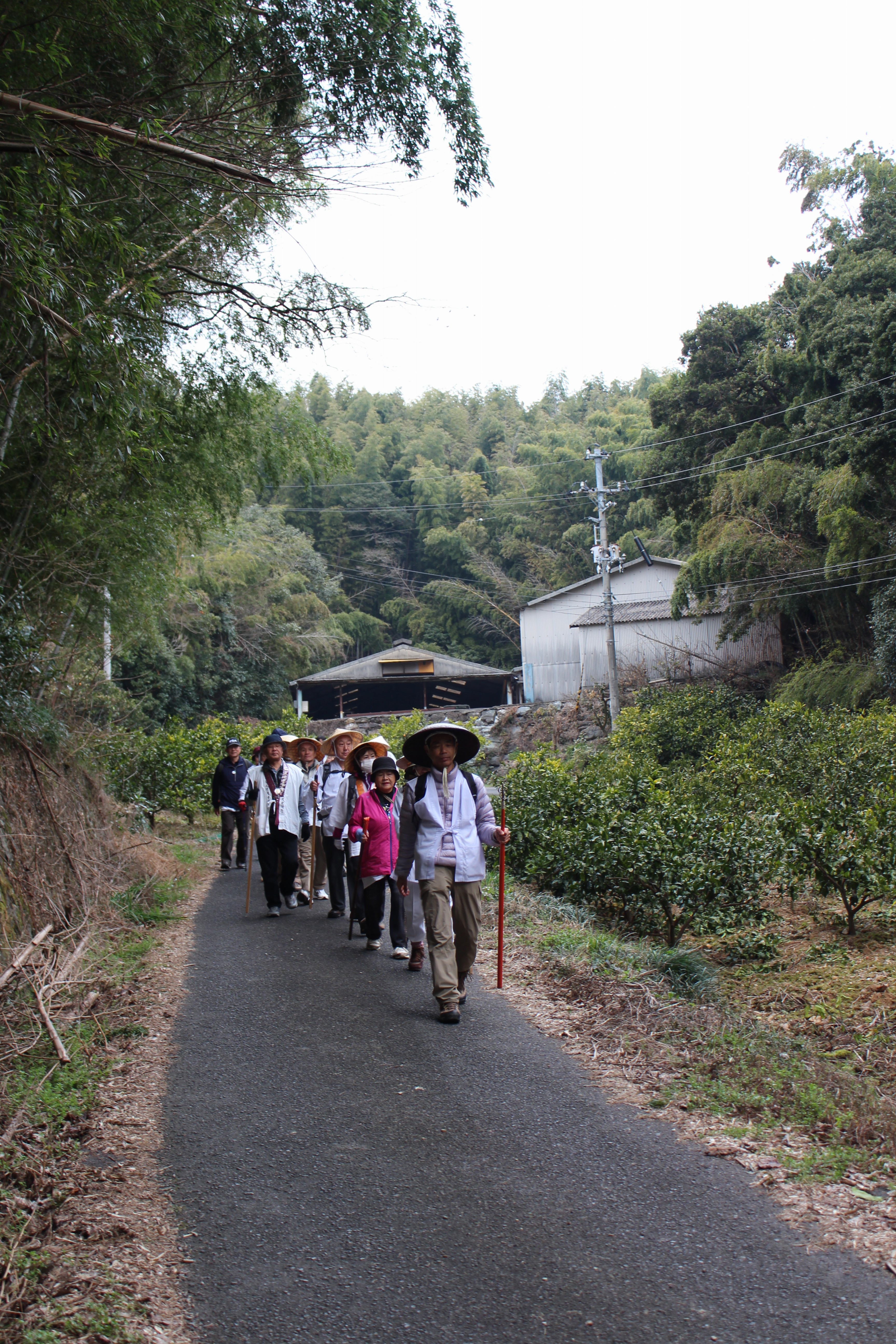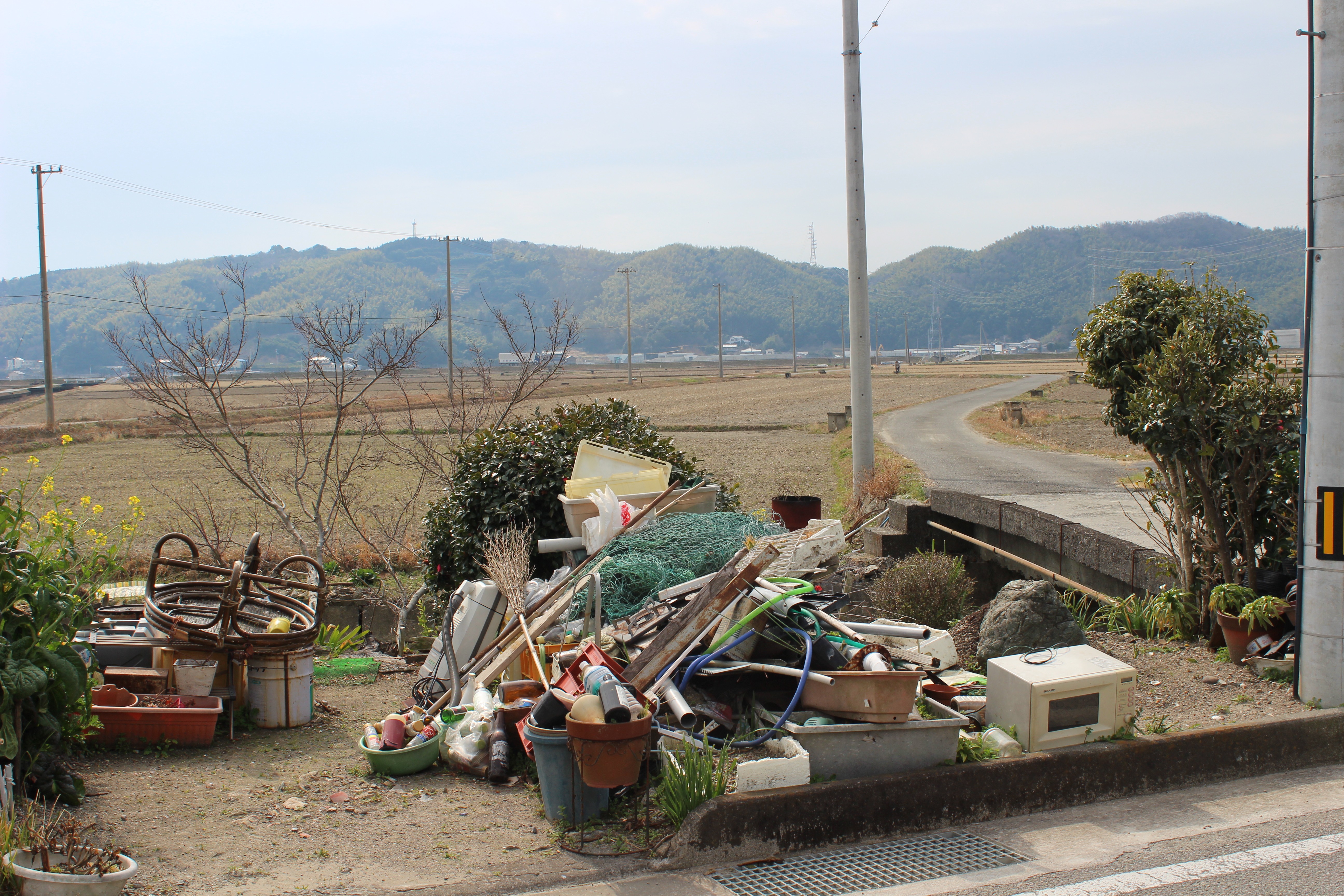Meeting Old Japan (temple 19)
Throughout the entire pilgrimage I received gifts of all kinds. It is an old custom to give
Osettai (gifts) to the pilgrims and expected that these will not be rejected. In return, the
Ohenro gives a name slip to the person whom he or she received the gift from.
The owner of this bakery invited pilgrims into his shop and served them tea and cookies.
At the end of one day, I received all these items above as gifts – amazing! The woman who
gave me the black hat also drove me through Tokushima City. I was very glad that I did not
have to walk on the never-ending city streets.
On the way to Tatsueji (temple 19), I walked through a bamboo forest and again met the
group of pilgrims from the previous temple who had been traveling on bus.
Mainly old people populate the rural area of Japan. I always enjoyed communicating
with them, even though I didn’t speak Japanese. These two women stood in front a
small cemetery.
Discarding trash is a big problem in the rural area of Shikoku. There seems not to be
trash services for big items like the ones you see on the photos. Therefore, trash is
discarded everywhere – in abandoned houses, rusted cars, or dumped just on the
side of the street.
The night before walking up the two mountain temples Kakurinji and Tairyūji, I slept at
Sakamoto, the most charming little village. The village not only consisted of typical Japanese wooden houses, but also of an abundance of dolls, which were used in celebratory festivals. The festival of dolls, called Hinamatsuri, identified as the Girls’ Day, is celebrated every year in Japan on March 3rd.
Main street of the village of Sakamoto, in which you can typically see many electric
polls. I was told that the reason why electric lines are not buried or hidden somehow is that it is easier to repair them after earthquakes. In front of every shop of the main street, dolls were shown surrounded by blooming branches.
Hinamatsuri can be traced back to the Heian period (794 – 1185) when straw Hina dolls
were placed on small boats and sent down a river towards the sea so that they would take
away troubles and bad spirits with them.










